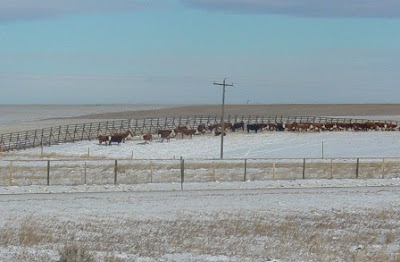After driving through what seemed like hundreds of miles of giant windmills in Kansas and Colorado a couple of weeks before, we first thought that the fences might be banks of solar panels, similarly harnessing renewable energy resources. But before long, it became clear that the fences were simply made of wood, and not connected in any way that would keep animals in or out, even though cattle seemed to enjoy lying in their shade.
My kids were alternately fascinated and then bored by the fences as we continued our trek eastward on I-80 toward Cheyenne. I continued to be amazed by them, and vowed to look them up when I got home. It took a few days, but I did get around to it.
The snow fences are indeed amazing. As it turned out, they were instrumental in making Interstate 80 usable again after it opened in 1970 only to close shortly thereafter due to massive accumulations of snow. The wind driven snow made it impossible to drive on the new highway, even with plows working overtime to clear it. But by harnessing the principals of aerodynamics, engineers and builders using the research of Dr. Ron Tabler, a pioneer in the study of wind and snow, figured out how to essentially make the snow plow itself.
It all came down to air flow and turbulence. Undisturbed, straight winds were able to carry a lot of snow and deposit it all over. But winds that passed through obstacles, such as trees, standing corn rows or those ubiquitous Wyoming snow fences tended to drop much of their load. Drifts formed right behind the fences, and if those fences were placed just far enough from the highway, the road would stay relatively clear.
How about that? Science and history all along the side of the Wyoming highway in the form of fences we don't tend to see in northeastern Oklahoma. That was my kind of learning adventure!


No comments:
Post a Comment
Note: Only a member of this blog may post a comment.